

TOP / Techniques Supporting Namiki
Namiki Maki-e fountain pens are created using various types of advanced techniques.
The more the lacquer is applied, the deeper the colour becomes and the more the gold and silver powder glows.
In a world where beauty is vividly expressed in motifs, these techniques convey tradition.
Lacquering, drawing, sprinkling and polishing. In order to bring out a beautiful,
fine Maki-e, these 4 processes are repeated many times over.
More than 3 months are required until completion,
with some Maki-e fountain pens being completed after going through the process as much as 130 times.
The undercoat of Maki-e fountain pens is black lacquer. This is lacquered to the body.
Motifs are drawn by several types of brushes on the lacquer undercoat.
Powdered gold is sprinkled onto the lacquer. A fine bamboo tool called “Funzutsu” is used in this process.
After lacquer has been applied to the whole pen the lacquer is rubbed off with charcoal until the pattern appears on the surface.
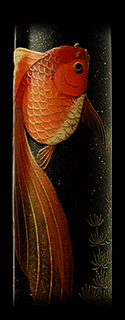
Shishiai Togidashi Maki-e is the intricate combination of Taka(raised)Maki-e and Togidashi(burnished)Maki-e,and the highest level of Maki-e requiring very advanced techniques.Urushi lacquer and charcoal powder are used to bring up the main design in high relief.Then raised elements are smoothed to a gradient and burnished to a uniform lustre.
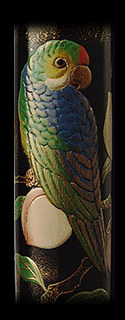
On completion of back ground and other elements of the scene using Togidashi Maki-e techniques, greater emphasis is provided to the main design through the use of other materials such as lacquer and charcoal powder. The design is then finished using the same techniques as those used in Hira(flat) Maki-e. The result is an impression of stately opulence.
production process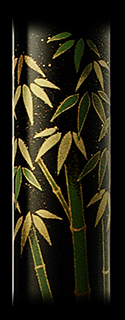
Hira Maki-e techniques are used to create the main design. Then the body is completely covered with Urushi lacquer, and after drying the design is revealed by burnishing the lacquer with charcoal.
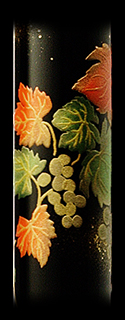
After finishing the back ground and other scene features by Togidashi Maki-e, then the main design is created using Hira Maki-e techniques.
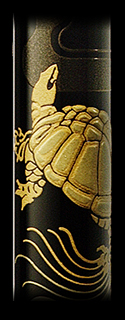
The lacquered main design is decorated with sprinkled gold and silver powders. Several additional layers of lacquer are then applied. After the lacquer is hardened, it is then burnished.
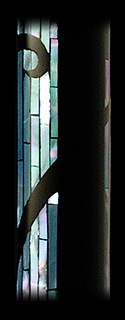
The inside surface stratum of various shells such as turban, trumpet and ear shaped shells etc. are peeled off in a thin layer. They are then cut into small pieces and these are coated with Urushi lacquer to secure them in place. This is then burnished to create a finish.
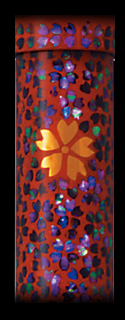
Various metal sheets such as gold or silver are cut out into the desired shape and embedded into the lacquer surface.These metal figures are then secured in place with further layers of lacquer. The surface of the Urushi lacquer is burnished with charcoal to reveal the embedded design.
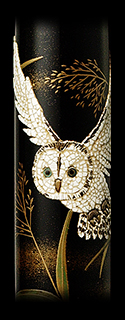
The design is created using small pieces or powder of quail shells. It is embedded into the lacquered surface and coated with lacquer. Then, the surface of the lacquer is burnished to reveal the design.
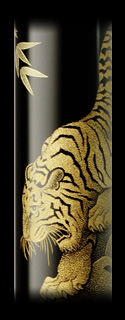
A technique involving special chisels are used to engrave a pattern onto the lacquered surface. The design is imbued with colour by applying an additional layer of lacquer to the chisel's tracings and inlaying gold leaf or gold powder.
production process